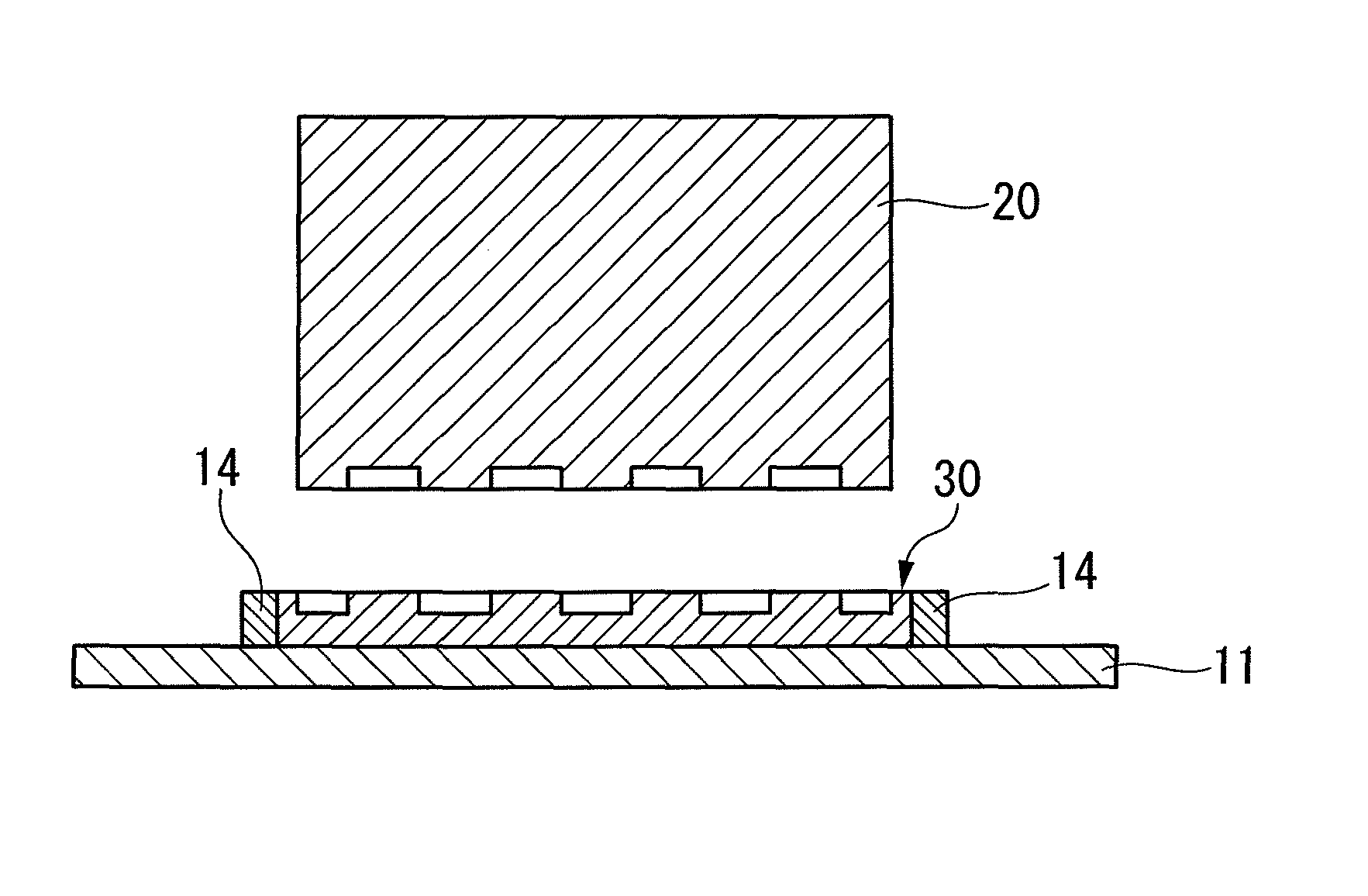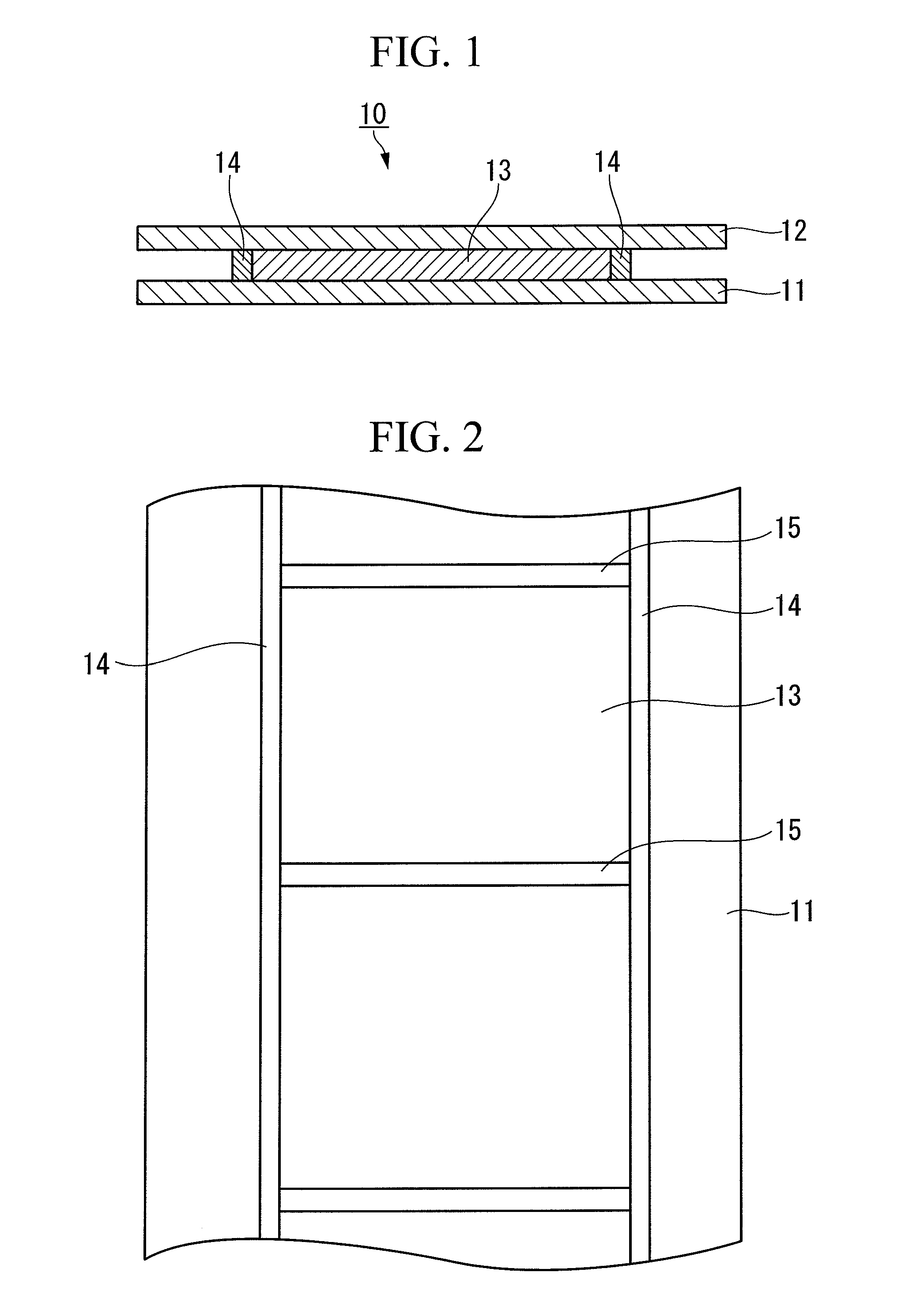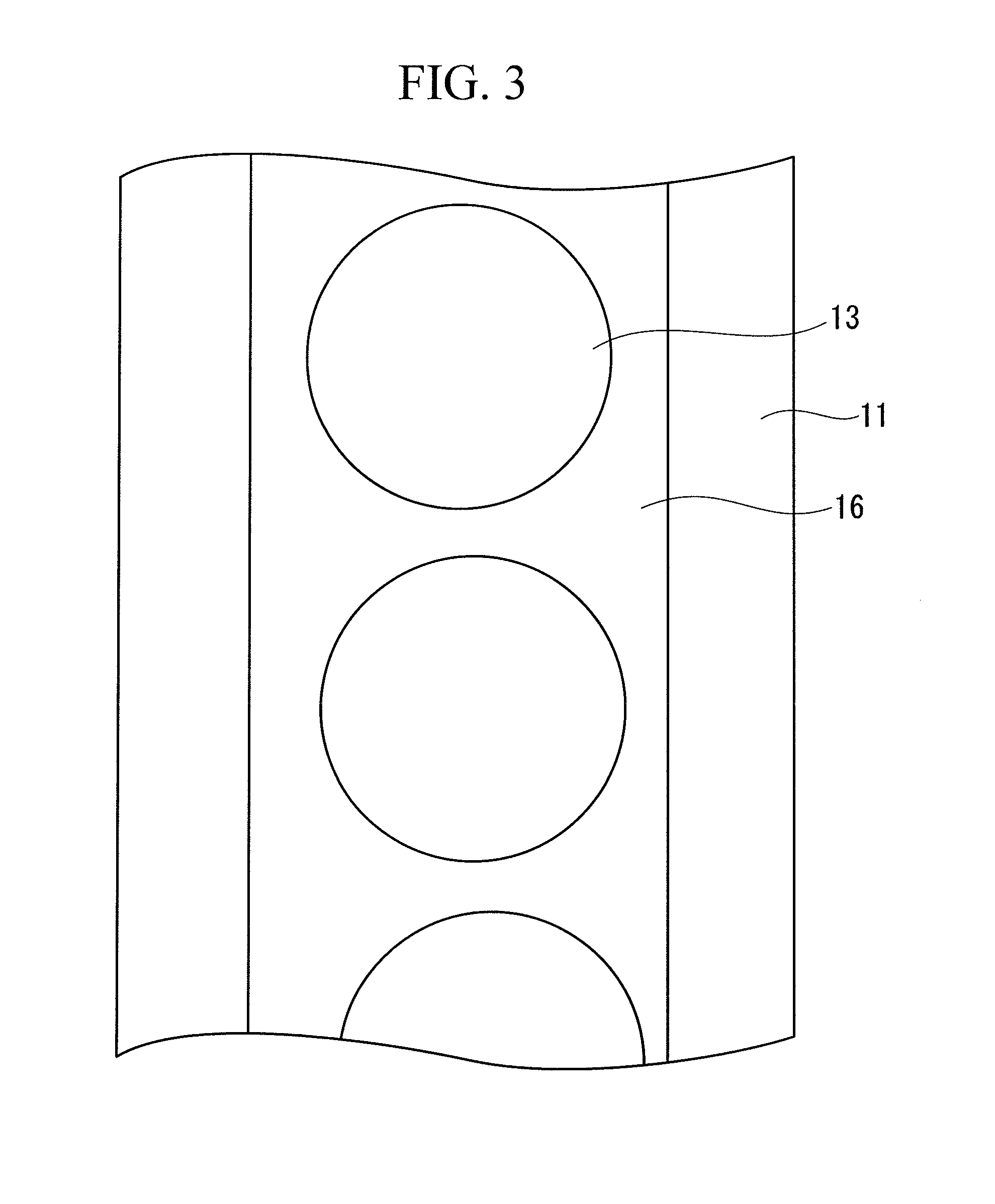Laminated body for manufacturing resin mold, laminated body, resin mold and method for manufacturing magnetic recording medium
a technology of resin molds and resin molds, which is applied in the direction of electric/magnetic/electromagnetic heating, transportation and packaging, coatings, etc., can solve the problems of deterioration of snr, deterioration of bit error rate, and magnetization volume per bit, and achieve high level of productivity, superior precision, and the effect of manufacturing with comparative eas
- Summary
- Abstract
- Description
- Claims
- Application Information
AI Technical Summary
Benefits of technology
Problems solved by technology
Method used
Image
Examples
examples
[0244]The present invention is described in more detail below using a series of examples, although the present invention is in no way limited by these examples.
Example of the First and Second Aspects
Preparation of curable resin material
[0245]77.4 parts by mass of BEAMSET 371 (an acrylic monomer, manufactured by Arakawa Chemical Industries, Ltd.), 6.0 parts by mass of a 25% by mass acetone solution of IRGACURE 127 (a photopolymerization initiator, manufactured by Ciba Specialty Chemicals Inc.), 2.5 parts by mass of MEGAFAC R-30 (a fluorine-containing surfactant, manufactured by DIC Corporation) and 16.4 parts by mass of ethyl acetate (a diluent solvent) were combined and blended together to form a solution of an ultraviolet-curable resin material.
[0246]The viscosity of this curable resin material was 59.1 mPa·s, and following curing, the cured product exhibited a light transmittance of 65% for radiation of wavelength 365 nm, and a tensile elastic modulus at a temperature of 25° C. of...
PUM
| Property | Measurement | Unit |
|---|---|---|
| viscosity | aaaaa | aaaaa |
| tensile elastic modulus | aaaaa | aaaaa |
| temperature | aaaaa | aaaaa |
Abstract
Description
Claims
Application Information
 Login to View More
Login to View More - R&D
- Intellectual Property
- Life Sciences
- Materials
- Tech Scout
- Unparalleled Data Quality
- Higher Quality Content
- 60% Fewer Hallucinations
Browse by: Latest US Patents, China's latest patents, Technical Efficacy Thesaurus, Application Domain, Technology Topic, Popular Technical Reports.
© 2025 PatSnap. All rights reserved.Legal|Privacy policy|Modern Slavery Act Transparency Statement|Sitemap|About US| Contact US: help@patsnap.com



